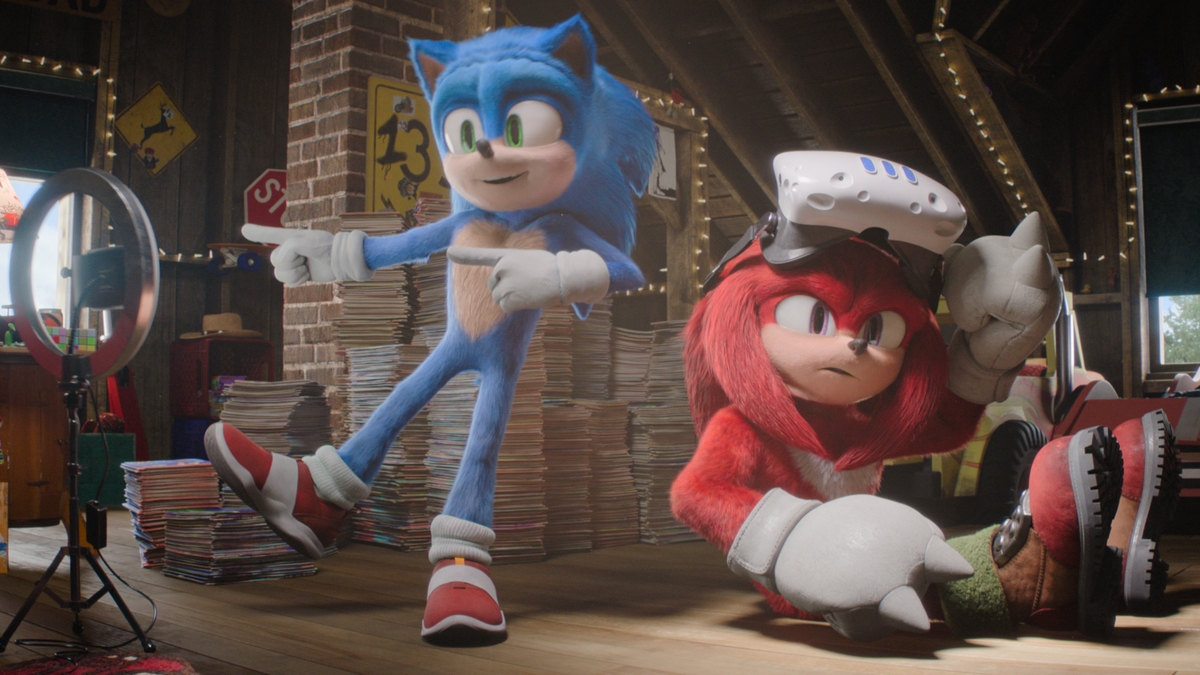
In a genre that is almost as old as the video game industry itself, keeping side-scrolling platform games feeling fresh in 2016 is no easy task. But after playing through just a few hours of Coatsink’s vibrant and gratifying title, Shu, I was confident that even veterans of this ancient gaming category would have something to shout about.
Shu’s premise isn’t necessarily a unique one: an evil force seeks to destroy the peace in a peaceful township. Shu, the game’s silent protagonist, is charged with escaping its clutches and finding a way to destroy it, rescuing his buddies along the way. But, as opposed to retreading old ground, the way in which the story is presented to the player — through gorgeous animation, a truly touching musical score, and some wonderful cinematic direction — makes Shu feels like its very own poignant and special adventure.
Aesthetically, Shu is a visual treat, an astoundingly beautiful palette of lively colors that comprise each of the game’s ambient and well-constructed levels. The deliberately primitive movement animations, also, feel wholly appropriate in bringing the game’s characters to life. They’re adorable, too, with a dreamy bird-like art style that is as spirited a motif as the game’s luscious backgrounds. It really is a vibrant spectacle, and one that is complimented well by a delicate musical score, seesawing between melodic harmony during standard sequences and frenetic orchestral tones during chase scenes.

You simply can’t understate the artistic design of Shu. Even the game’s sweet array of sound effects rock. In particular, the noises that Shu’s companions make when using their abilities, and it’s these sort of sensory elements that makes each of the game’s environments feel so full of character. As a whole, the aural aspects of the game help convey a pretty touching and poignant narrative effectively, even without the use of dialogue.
When a game restricts player agency to navigating a single plane of movement, especially in a fast paced side scrolling platformer such as Shu, you need a responsive and tactile gameplay. Thankfully, that is exactly what Shu delivers, with a slickness to proceedings that feels awesome to play, and that’s a good thing — because the game’s more intricate platforming sequences do demand precision. Controls feel super tight, too, giving players the confidence to approach each stage with the pace that the game encourages.
Shu is a pure platforming experience, with gameplay that centers around entertaining sequences of traversal across some truly superlative level design. On top of the usual platforming controls, players are afforded the ability to sail with the R1 button thanks to Shu’s blouse, which acts like a parachute to extend basic jump abilities. A simple mechanic, to be sure, but there’s lots of fun to be had combining successive timed jumps to reach further distances and clear obstacles.
Wind streams, too, feature frequently and are able to be glided on, accelerating players through different areas. Sections requiring players to sail between updrafts are also a blast, carefully timing of R1 to navigate large sections of the level at warp speed.
Shu’s gameplay really shines, though, when players are paired with other companion characters encountered along the way. Linked adorably by holding hands with as many as two, these characters grants different abilities such as double jump, wall jumping, time manipulation or ground thumping. The stages are really nice designed around these abilities and there’s plenty of interaction with the level itself. In fact, mastering these sections lead to some of the best platform gameplay I’ve enjoyed in years.

The structure of Shu’s five stages each follow a familiar beat; navigating stunningly well-crafted levels in quick platforming sequences that flow with such grace that gameplay is an almost rhythmic experience. And indeed, there’s a certain elegance in its execution, reminiscent of some of the great 2D platformers of the past.
At the close of each stage, players are chased by the game’s antagonist, a strange demon-like entity. Quick platforming suddenly becomes a frantic chase sequence, as you’re forced to execute all your skills to avoid the gaping mouth of their pursuer. These are certainly the hardest sections of gameplay, though not necessarily always the most enjoyable, as the speed sometimes feels as though it is exceeding the design of the level, requiring trial and error in some instances rather than flowing satisfactorily.
With five stages, each containing three levels, Shu is very much short and sweet experience, but there is replayability in the guise of timed challenges and collectibles. The gameplay and level design are a speedrunner’s dream, and online leaderboards add a competitive element to proceedings that are sure to appeal to hardcore players of platformers, or for those that just want to eke out a bit more content. For the trophy hunters, Shu also has achievements based on collectibles and completion percentages that further extend playtime.
Yet, there’s no denying that Shu is a brief game, and while the pacing of the story feels appropriate in context to length, one can’t help but feel Coatsink could have included more content. I just wish there was more to the game because it’s a joy to play, and based on how detailed each stage is, you get the feeling the design team has more up their sleeves. Perhaps I’m being greedy, though — I do like how handcrafted each unique stage is, without much in the way of rehashed assets.
In the end, there’s plenty of reason to love this superb little platformer and very little to complain about. Shu definitely feels as though it borrows from classics such as Donkey Kong and Rayman, but there’s nothing particularly wrong with that, and Coatsink has put enough of their own flavor into Shu to give this standout indie game plenty of its own personality. While Shu might be slightly shy on content, the developer has suggested that free DLC available on PS4 will be available in the future. Yet, even in current guise, you would be hard-pressed to find a more complete platforming package amid a sea of indie side-scrollers.
This review is based on the PS4 version of the game, which we were provided with.






